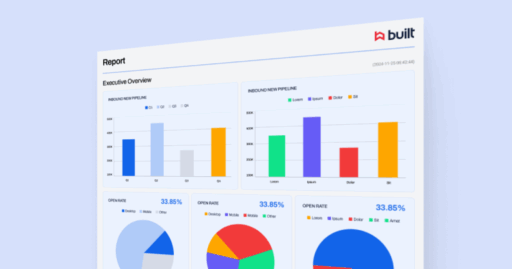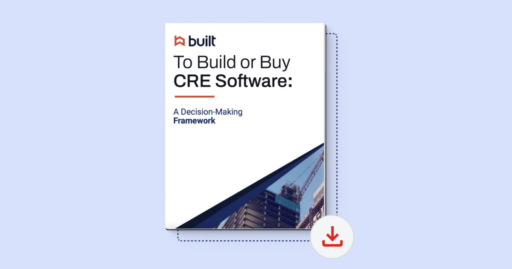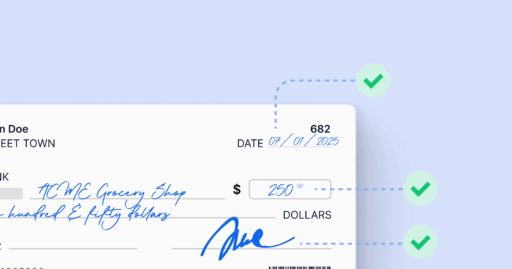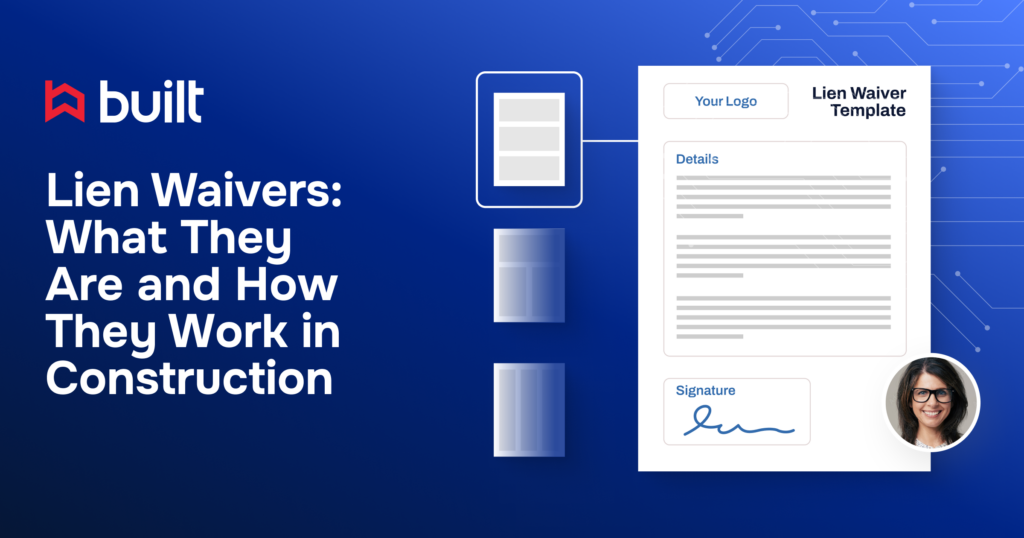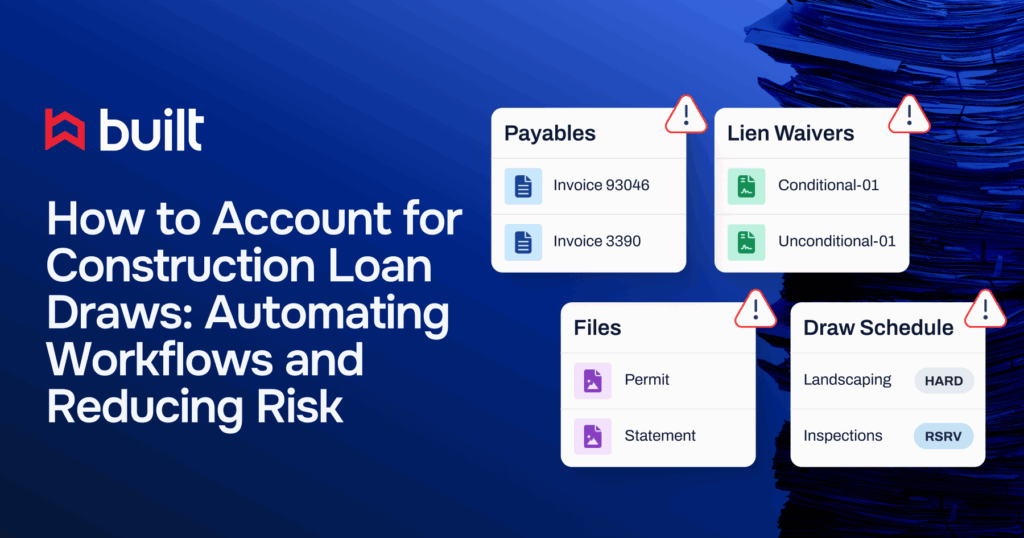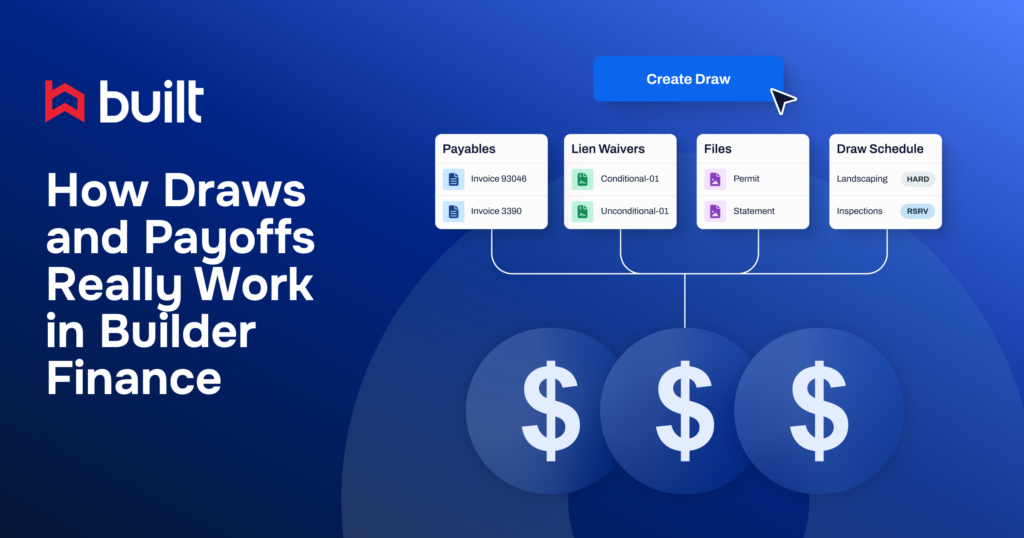
Understanding Hard Costs and Soft Costs in Construction Projects

Construction costs can be broken into two main categories: hard costs and soft costs. Keeping these costs organized during the budget estimation process can help to prevent delays, errors, and cost overruns that could pull the project off-track, exposing lenders to risk.
For instance, if these costs get lumped into big line items, lenders could be left with inaccurate project updates and completion rates. This also makes the draw process even more time-consuming, limiting a lender’s ability to help contractors maintain healthy cash flow.
To manage a construction loan effectively, lenders need visibility into the monitoring and approval process to avoid potential cost overruns or blown budgets. An integrated digital project management and budgeting tool can help. This solution can provide full insight into the breakdown of estimated hard and soft cost line items while allowing lenders to monitor project budgets and progress in real time—giving them the power to take action when they’re needed most.
What are soft costs in construction?
For general contractors or building developers, soft costs are any cost that gets a project from pre-construction to finished product, beyond materials and labor. These costs don’t often involve third-party site use inspections, which are common with hard costs.
In many cases, these costs aren’t tangible but still necessary to get the job done. Soft costs can include, but aren’t limited to:
- Architectural and engineering services, planning, and fees: feasibility studies, fees for architectural master planning and designs, and health and safety
- Inspection fees and permits: building permits and inspections, including third-party verifications and studies
- Land and real estate costs: purchasing the land, mortgage application, origination fees and payments, and state and local property taxes
- Rental, equipment, and tools: transporting equipment for staging or office equipment like communication devices. These costs don’t include equipment and tools directly related to the physical building.
- Accounting: accountants, accounting software, and timekeeping, especially during an extensive building process
- Project management: all project management costs, including temporary security, administrative handling, and processing of project-related tasks
- Post-construction costs: continuing legal fees or insurance
- Marketing services: project marketing, including during the lease-up period, and any promoting and public relations costs
What are hard costs in construction?
Hard costs in construction are directly related to the physical building of a project. These are also often called tangible or brick-and-mortar costs and are typically easier to quantify than soft costs.
Hard costs may include, but aren’t limited to:
- Materials: actual items used to construct the building structure, including metal framing, wood, screws, insulation, and concrete. It also includes rental equipment used for building.
- Labor: people and businesses hired to work on the project, including temporary workers, contractors, and subcontractors
- Interior costs: fixtures, furnishings, and safety equipment such as fire sprinklers, alarms, and related systems
- Landscaping: buying and planting trees, grass, and shrubs, as well as any improvements, such as walkways or benches
- Site: utilities, including water and gas, drains, and piping, as well as site improvement activities, such as grading or paving
- General conditions: costs that help enable the project, ranging from renting restroom facilities for workers to temporarily waterproofing the building for winter
Differentiating between hard costs and soft costs
Determining a hard cost vs. a soft cost will help to streamline budgeting, reduce risks, and keep projects moving on time.
For lenders, hard costs are tangible and typically require a third-party inspection. For example, a general contractor requests $100,000 for drywall. A lender may have a third-party, on-site inspection to determine if the material amount needed is correct and approve the draw.
With soft costs, funds are typically made available without a third-party review. For example, an invoice for $25,000 in engineering redevelopment wouldn’t need outside vetting.
Why hard and soft costs matter to lenders
Development projects have so many moving parts, and budgets can change on a dime due to unexpected shipping delays or even bad weather. Pair that with outdated estimates and forecasts across various spreadsheets and stakeholders, and it’s easy to see how difficult it can be to review and approve draws quickly—not to mention accurately. Delayed funds will only introduce a ripple effect on the project’s overall costs, impacting the timeline and profitability down the road and leaving lenders in constant catch-up mode.
Digitizing the budget process removes silos, streamlines workflows, and allows for more strategic decision-making. Giving lenders and builders a centralized view of the budget, costs, and drawdown requests should help forge stronger partnerships from the get-go and help keep projects on time and on budget.
